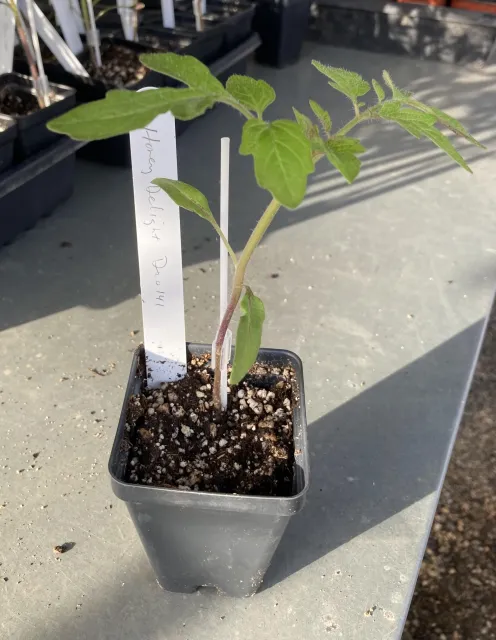
First of all, what are grafted tomatoes? Grafted tomatoes consist of a modern varietal tomato (the scion) attached to the root system of another plant (rootstock). The rootstock can be another tomato or another plant in the Solanaceae family, including eggplant, pepper, tobacco or potato.
Most commercially available tomato rootstocks are hybrids that include a wild tomato species in their parentage. Native to South America, wild tomatoes are very vigorous plants, adaptable to a range of growing conditions and naturally disease resistant. They can produce thousands of tomatoes, but the fruits are very small (pea sized) and not always edible. Being in the Solanaceae (nightshade) family, some wild tomato species are poisonous.
Dozens of rootstock varieties exist, and it’s the wild tomato component that gives grafted plants improved vigor and resistance to soil borne diseases (blight, wilt, nematodes). Interaction between the scion and rootstock can also affect the plant’s tolerance to heat, cold, drought, flooding, salinity, etc., and even resistance to foliar disease and pests. Needless to say, rootstock development and scion/rootstock interaction are areas of intense research.
Rootstocks are classified as generative or vegetative. Generative rootstocks direct the plant’s energy more toward fruit production. They’re preferred for early fruiting varieties, smaller fruit or in areas with a short growing season. Vegetative rootstocks direct the plant’s energy more toward root, stem and leaf growth. A vegetative rootstock can sustain a larger plant with a prolonged fruiting period (indeterminate) and is preferred in areas with a long growing season like ours. Regardless, all show improved vigor and disease resistance.
So, are grafted tomatoes worth it? Under absolutely ideal conditions, performance of grafted and nongrafted plants can be similar. But our garden conditions often aren’t perfect. If your tomatoes have had problems with soilborne diseases in the past, or if limited space prohibits adequate crop rotation (minimum 3-year schedule), grafted plants can be a solution. Heirloom varieties, being more disease prone, perform better if grafted. And grafted plants often flower and fruit earlier, contributing to a higher yield. Because of the work involved, grafted plants are definitely more expensive. Few garden centers sell them, and mail order (with the added shipping cost) is usually the only option for home gardeners. But for those who are very serious about tomatoes, grafted plants can be worth it.
Also see: Grow more robust tomatoes with grafted plants from the UC Master Gardeners
__________________________________
Written by Fresno Master Gardener Susan Rosenthal


